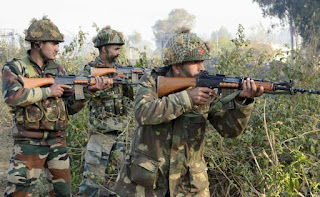Sri Lanka’s
reformist President Maithripala Sirisena has lived up to his election promise
as he has proposed a new constitution aimed at devolving power, a long-pending
demand of the country’s minorities, including the Tamils. One hopes the
constitution, once adopted, will genuinely usher in national unity in the country,
which was torn apart by the 26-year-long armed conflict between security forces
and the Tamil Tiger rebels. Even after the end of the fierce conflict in 2009,
the island nation has been struggling to establish bonafide democracy and
restore fundamental rights to all its citizens.
President Sirisena should be lauded as he is making an honest attempt to
put an end to ethnic tensions that led to a long and bitter civil war in which
more than 100,000 people were killed.
The new
constitution seeks to guarantee fundamental rights and freedoms that assure
human dignity and promote responsible and accountable government. It is a bold
statement which attempts to take reconciliatory steps to reach out to all
communities.
President Sirisena’s comments that the constitution must “suit the
needs of the 21st century and make sure all communities live in
harmony” are aimed at addressing the concerns of Tamil minority, which felt
alienated in the previous set-ups.
The proposed
constitution also seeks to overhaul the present electoral system which many
considered flawed and non-representative. There is a proposal to increase the
seats in the country’s parliament from 225 seats to 237. Besides 145 elected
representatives, it seeks to select 55 representatives on a proportional
representation basis keeping in mind the interests of all the communities.
Another 37 representatives will come from a national list of candidates. The
proposed changes make the political system more transparent and inclusive. The
thrust is to unify different ethnic communities by giving them proportionate
representation, something which was missing in the constitution since the
country gained independence from Britain in 1948. The successive governments
always bowed to the pressures from the powerful majority ethnic Sinhala
community which was against any power-sharing deal with the minority ethnic
Tamils.
Another
major contentious issue has been the denial of higher government positions to the
ethnic Tamils by the successive governments after the independence. During the
British regime, the local Tamils were favoured for key government positions
over the Sinhalese. Tamils’ alienation grew into frustration as the governments
started ignoring their interests and pandering to the majority Sinhalese
population. This led to the creation of
the Liberation Tigers of Tamil Eelam or LTTE which waged an armed struggle
against the government for the creation of an independent state for the
country’s minority Tamils.
The seriousness
of the new government in carrying out political reforms is beyond doubt as it
agreed to investigate alleged war crime allegations against government troops
and LTTE rebels only a few months ago. The government has pledged a truth and
reconciliation commission to investigate the charges, which, however, falls
short of the demands for an internationally-backed judicial inquiry. A United Nations report estimates
that at least 40,000 Tamil civilians may have been killed in the final months
of the civil war when the then government of President Mahinda Rajapaksa
launched a massive military operation to crush the separatist LTTE and reclaim
the areas controlled by it.
Sadly, the
proposed reforms, which have far reaching consequences, are being fiercely
opposed by some disgruntled elements led by the former President Rajapaksa who
have accused the government of kowtowing to the western nations. Attempts are
also being made to fan communal tensions by opponents who say the new
government is diluting the main religion, Buddhism. Rajapaksa and his family,
which had completely monopolized the power, are opposing the proposal to
abolish the Executive Presidency for political motives only. The draconian
powers of the Executive Presidency were first introduced by the then President
J. R. Jayewardene in 1978 weakening the authority and supremacy of parliament. No government had misused the Executive
Presidency as much as President Rajapaksa did.
The
challenges are too many for President Sirisena who is seeking to restore the
credibility of parliament and address the genuine concerns of the Tamils within
the framework of the constitution. There is no doubt that Sri Lanka desperately
needs a new constitution which seeks to democratize the existing institutions
and establish the rule of law. Sirisena was voted to power on these twin promises.
Now that the people have given him a mandate, no attempt should be made to weaken
that mandate.



